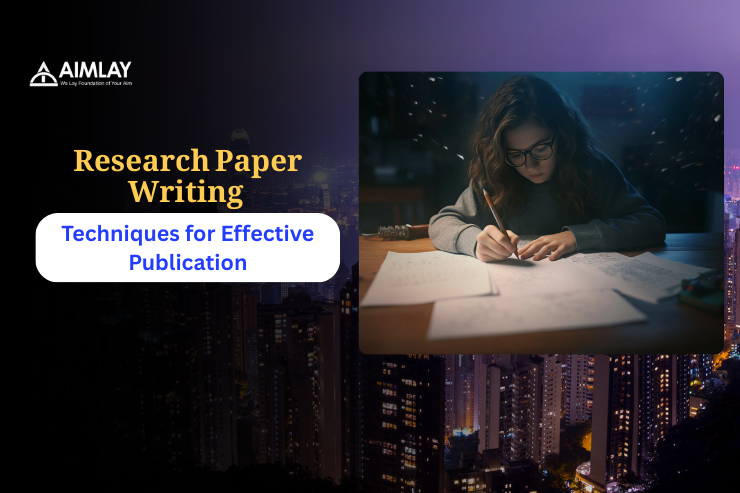MBA in IT Admission 2025: Course Details, Entrance Exam, Eligibility, Application, Selection
- aimlay01
- Jul 25
- 4 min read
With the rapid integration of technology into every aspect of business, an MBA in Information Technology (IT) has emerged as a valuable and strategic qualification for professionals aiming to lead digital transformation. As the 2025 admission cycle begins, aspirants across India and globally are gearing up for a chance to enter top management institutes offering this specialized MBA program.
This guide provides a detailed overview of MBA Admission 2025, covering course structure, entrance exams, eligibility, application steps, and selection process.

📘 What is an MBA in IT?
An MBA in Information Technology is a two-year postgraduate program combining core management subjects with specialized IT modules. The course is designed to develop managerial skills while equipping students with the knowledge to manage and implement IT systems in business environments.
Key Focus Areas:
IT project management
Digital strategy
Data analytics and cloud computing
Cybersecurity management
Enterprise resource planning (ERP)
Technology consulting
Innovation and entrepreneurship
🎓 Course Structure
The MBA in IT program generally follows a trimester or semester format and includes:
Year 1:
Core management subjects (Marketing, Finance, HR, Operations)
Introduction to Information Systems
Business Statistics and Analytics
Managerial Economics
Organizational Behavior
Year 2:
Specialization subjects (e.g., IT Infrastructure, Blockchain, AI in Business)
Electives and Capstone Projects
Summer Internship (after first year)
Dissertation or Industry-based Project
Many universities integrate live case studies, industry interactions, and certifications (like SAP, AWS, or Google Cloud) as part of the curriculum.
✅ Eligibility Criteria for MBA in IT Admission 2025
Most institutes have the following minimum requirements:
1. Educational Qualification
A bachelor’s degree in any discipline from a recognized university
Minimum 50% marks (45% for reserved categories)
2. Entrance Exam Score
Valid score from accepted MBA entrance exams (e.g., CAT, XAT, SNAP, NMAT, MAT, CMAT)
3. Work Experience (Optional)
Not mandatory, but preferred for some institutes and executive MBA programs
4. English Language Proficiency
For international applicants: TOEFL, IELTS, or equivalent scores may be required
📝 MBA in IT Entrance Exams 2025
Admission to MBA in IT is based on performance in national or university-level management entrance exams.
Exam | Conducting Body | Application Window | Exam Date (Tentative) |
CAT 2024 | IIMs | Aug – Sep 2024 | Nov-24 |
XAT 2025 | XLRI | Aug – Nov 2024 | Jan-25 |
SNAP 2024 | SIU Pune | Aug – Nov 2024 | Dec-24 |
NMAT 2024 | GMAC | Aug – Oct 2024 | Oct – Dec 2024 |
CMAT 2025 | NTA | Feb – Mar 2025 | Mar – Apr 2025 |
MAT 2025 | AIMA | Quarterly | Multiple Windows |
Some universities like SCIT (Symbiosis) or NMIMS require candidates to appear for their specific entrance exams (SNAP, NMAT).
🖊️ How to Apply: Application Process 2025
Here is a step-by-step guide for applying to MBA in IT programs:
Step 1: Choose the Entrance Exam
Identify the accepted exams for your preferred institutes
Register for the entrance exam(s) on their official websites
Step 2: Prepare and Appear for the Exam
Use online/offline resources, coaching, mock tests
Focus on sections like Quantitative Aptitude, Verbal Ability, Logical Reasoning, and Data Interpretation
Step 3: Apply to Institutes
After entrance test registration or result, apply to B-schools individually through their portals
Submit academic records, entrance score, personal details, and application fee
Step 4: Upload Supporting Documents
Scanned mark sheets and degree certificates
Entrance test scorecard
Work experience (if applicable)
Identity proof, photographs
Step 5: Track Communication
Watch out for shortlists for Group Discussion (GD), Written Ability Test (WAT), and Personal Interview (PI) rounds
🧾 Selection Process for MBA in IT
The selection process usually involves multiple stages after the entrance exam. It may vary by institution but commonly includes:
1. Shortlisting Based on Exam Score
Institutes shortlist candidates based on cutoffs set for the respective entrance exam.
2. GD/WAT-PI Round
Group Discussion: Candidates are assessed on leadership, communication, and team behavior.
Written Ability Test (WAT): Essay or short writing task on current topics or case studies.
Personal Interview: Evaluation of academic background, goals, IT/business awareness, and soft skills.
3. Final Merit List
Colleges release a final list based on cumulative performance:
Component | Weightage (Approx.) |
Entrance Exam Score | 40–60% |
GD-PI-WAT | 20–30% |
Academic Profile | 10–15% |
Work Experience | 5–10% |
Diversity Factor | Varies |
💼 Career Prospects After MBA in IT
Graduates of MBA in IT are well-placed for leadership roles in both IT companies and tech-driven business functions.
Top Roles:
IT Project Manager
Business Analyst
Product Manager – Technology
Chief Information Officer (CIO)
IT Consultant
Data Strategist
ERP Consultant
Recruiters:
Infosys, TCS, Wipro, Accenture
Deloitte, PwC, EY, KPMG
Amazon, Google, Microsoft
Tech Mahindra, Cognizant
Startups and FinTechs
Salary Range:
Entry Level: ₹6–12 LPA
Mid-Level (3–5 years exp.): ₹12–20 LPA
Top Tier B-Schools: ₹20–30 LPA and above
📅 Important Dates: MBA in IT Admission 2025 Timeline
Activity | Tentative Dates |
Entrance Exam Registrations | Aug – Nov 2024 |
Entrance Exams | Oct 2024 – Mar 2025 |
Institute Applications | Sep 2024 – Feb 2025 |
GD-PI Shortlists | Jan – Apr 2025 |
Final Results | Mar – Jun 2025 |
Program Commencement | Jun – Aug 2025 |
Note: Dates may vary slightly by institute.
🧠 Final Tips for Aspirants
Start Early: Begin preparing for exams and shortlisting institutes by mid-2024.
Stay Updated: Follow official websites of target colleges and exams for updates.
Practice Mock Tests: Regular mock exams and analysis will improve your test performance.
Prepare for Interviews: Build knowledge around IT trends, digital business models, and personal career goals.
Consider ROI: Weigh tuition fees, placement records, and industry partnerships before finalizing colleges.
Pursuing an MBA in IT in 2025 offers a unique opportunity to combine managerial prowess with cutting-edge technology expertise—skills highly valued in the digital age. With focused preparation and strategic planning, aspirants can secure admission to top institutions and unlock rewarding career paths.








Comments